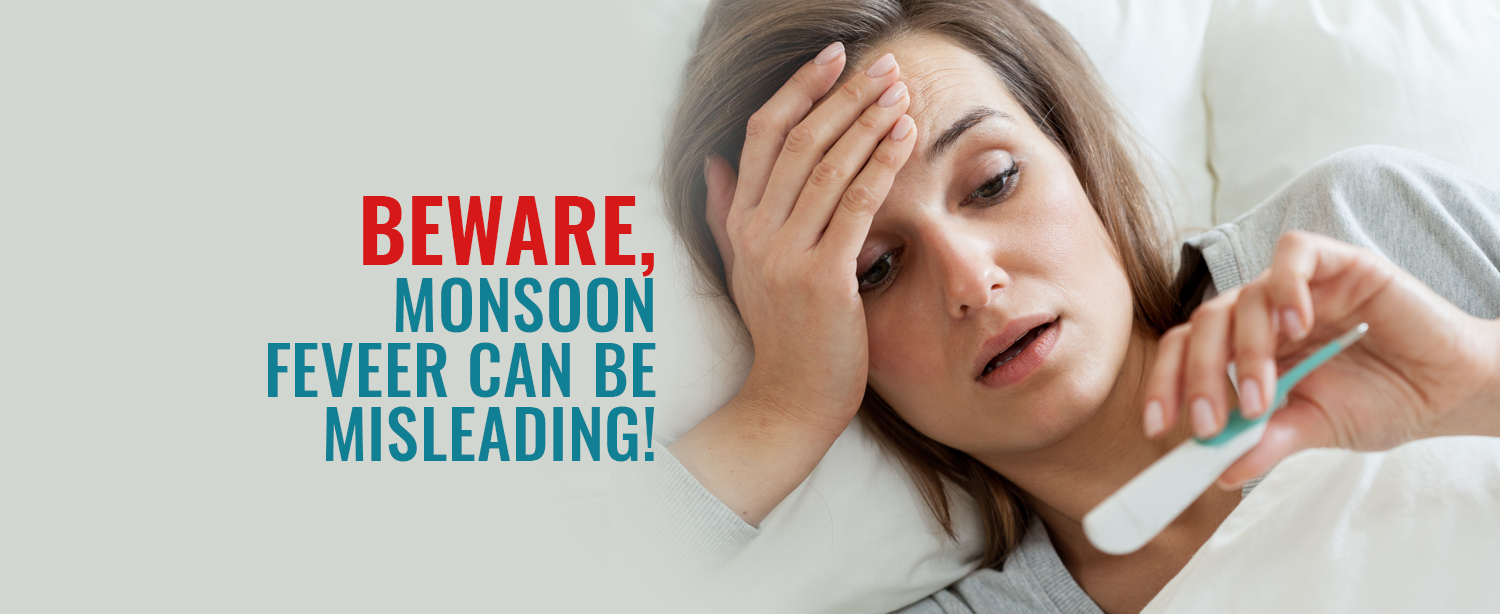Monsoon brings along pleasant showers and a cooler climate. However, it also brings along viral infections, bacterial infections, air-borne and water-borne diseases. Fever happens to be one of the most common symptoms in many diseases. This often tends to mislead patients. The number of patients complaining of fever and associated conditions rises sharply in the monsoon. Doctors recommend that any episode of fever should not be taken lightly and a medical investigation must be done. Avoid self-medicating.
Do you often have these questions?
- What can be the cause of fever?
- Is it a viral infection ?
- Is it a bacterial infection ?
- Are any blood tests needed?
Fever can be caused due to many diseases. It is important to get medical help at the right time to avoid health complications.
What is Fever?
When any bacteria or virus attacks on our body, then our body tries to kill it. When the body increases its temperature for this purpose, it is termed as Fever. Whenever the body temperature increases from normal (98.3), it will be called Fever. Fever may need paracetamol, water sponges or even anti-bacterial medicines to control. You will need medical advice on this.
Common Monsoon diseases:
The troublesome thing is that many monsoon-related illnesses share similar symptoms such as fever and body ache. This makes it difficult to distinguish between different types of diseases. Here are some of the most common underlying causes of fever:
- Viral Fever: An intense fever that lasts for three to five days, accompanied by severe chills and body ache. It typically lasts three to five days and goes away as quickly as it comes.
- Dengue Fever: A fever that lasts for up to seven days often with a drop and then small resurgence towards the end, plus headache, swollen and painful joints, and then a rash. After the fever, finger and toe joints may swell and start hurting, and some patients report a pin-prick rash over their legs, arms, and torsos.
- Malaria: A short-lasting, recurring fever, accompanied by chills and body ache. The short duration and recurrence of symptoms are what really distinguish malaria from other illnesses. Fever and chills last around five hours at a time but return every second day.
- Typhoid: This disease is transmitted by a bacteria named as ‘Selmonella’, due to which ulcers are formed in the intestine which results in fever. Mixing of sewage water in the drinking water is the main cause of this disease. This disease can happen anytime in the year but it spreads mostly in the monsoon season because of poor sewerage conditions in this season.
- Chikungunya: Chikungunya is a viral disease transmitted to humans by infected mosquitoes. It causes fever and severe joint pain. Other symptoms include muscle pain, headache, nausea, fatigue, and rash. Joint pain is often debilitating and can vary in duration. There is no cure for the disease. Treatment is focused on relieving the symptoms.
- Seasonal Influenza: Unless a new flu virus is causing infection, infected people otherwise healthy usually have a mild fever accompanied by cough, nasal congestion and body ache that lasts for five days to a week.
- Leptospirosis: Leptospirosis is a bacterial disease that affects humans and animals. It is caused by bacteria of the genus Leptospira. It is spread through direct contact with urine from infected animals or through water, soil or food contaminated with their urine. High fever, headache, bleeding, muscle pain, chills, red eyes, and vomiting are some symptoms.
Missed diagnosis
The symptoms of most mosquito-borne diseases are similar, making diagnosis hard without tests. There are, however, minor differences in symptoms that can help your physician distinguish between the infections, so it’s important for you to explain all your symptoms clearly. A blood test is also highly beneficial for timely and correct diagnosis.
Feel free to consult our team of doctors for high fever or any other medical diagnosis or treatment. Please find below the link for our website:


